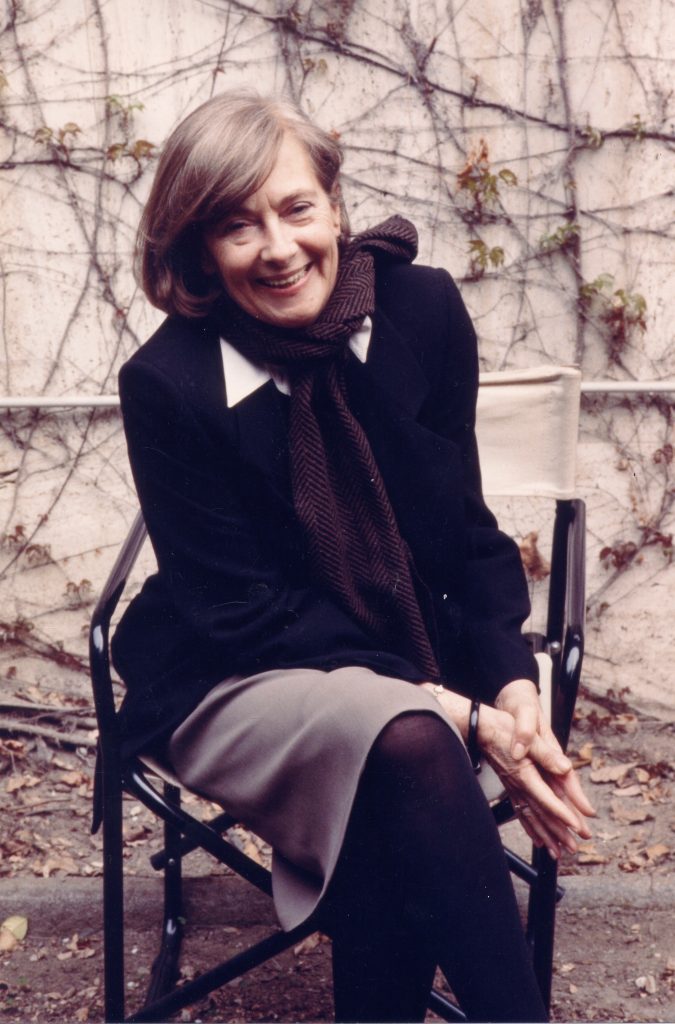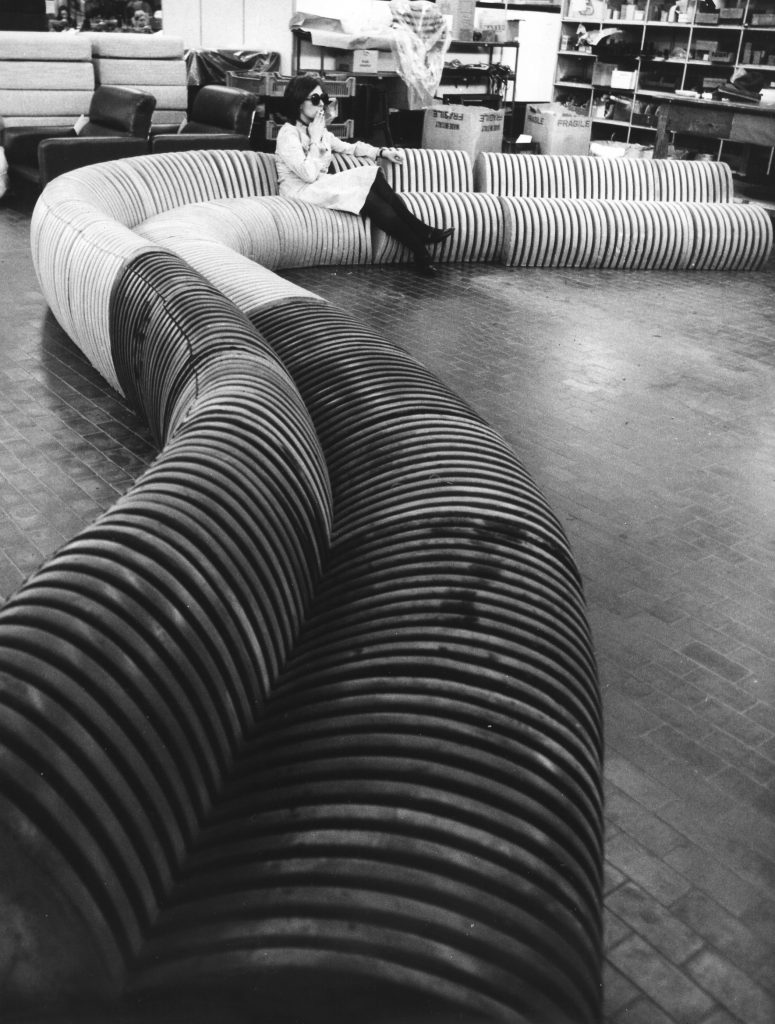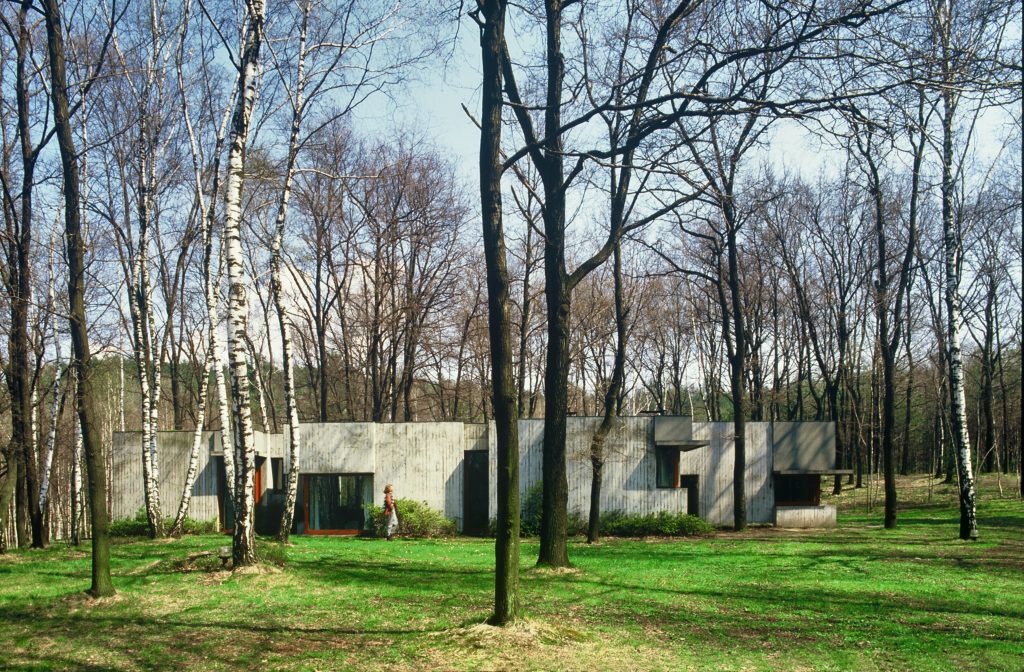Cini Boeri graduated in 1951. In 2015 we met her among her works, some older than this writer, to hear about more than 60 years of her career through one of her latest monographic exhibitions: ’Designing joy’. We recall the famous architect travelling with dreamy eyes and irony through her long years and the history of twentieth century architecture and design while answering the questions from alumni:

AP: Cini, you graduated in 1951 and then opened your studio very early, in 1963. Your career took off among projects, teaching, research, leading to this exhibition, ‘Designing Joy’, a sort of compendium of your professional life.
CB: Yes. I didn't have to wait long after graduation to start working. I only worked with Gio’ Ponti for a year. He was the one who pushed me into the profession. He said: ‘You, with the colours you make, you must become an architect!’ Then I went on alone. I had a secretary and occasionally some interns practicing with me.
AP: During one interview, you said that a good part of your work consists of designing everyday objects, with the goal that they are not owned but rather used. The use of objects and the relationship with space can be a source of joy. What does that mean?
CB: When I design a house for a couple, for example, I always suggest including an extra room. They always ask, ‘Is it for guests?’ No! Not for guests. Because if one of them has a cold one night, for example, they can go to sleep in the other room. One should be able to choose, to know that they can sleep with their partner, but that they can also decide not to, without affecting their life as a couple. I think it would be very educational to teach young people that when they come together as a couple, it is not compulsory to share a bed; it is a choice. It is much nicer that way.
AP: So you think that everyday spaces can be used to educate people about different models of life?
CB: Exactly! Of course.

AP: In what way do you think your work can contribute to educating citizens?
CB: Society matures a bit on its own. Today people are more autonomous and independent. It is an ongoing process. As an architect, I can propose alternative ways of living and using spaces, facilitating an ongoing process of emancipation and promoting freedom of choice wherever possible.
AP: When speaking about your work, the words that often emerge are those of a democratic approach to architecture and design. What does that mean? Who were your intellectual fathers?
CB: It is the Politecnico that accustomed us to this. We were taught very openly … I don't know if it's still like that today!
AP: Can you tell us something about your time at Poli?
CB: Umm … we used to debate a lot! I started the course with mature ideas about independence and mutual responsibility. Even then I thought it was important to focus on individual freedom, and my projects have always tried to concretize this principle. So we debated! Even today, these ideas are unlikely to be accepted as serious proposals. The one about the extra bedroom, for example, is taken as a threat to marriage! But it isn’t. Learning to think for yourself benefits a couple’s well-being; it doesn’t threaten it.
AP: Who did you debate with? The teaching staff?
CB: Not necessarily. The professors were broad-minded. I remember, for example, Renato Camus (I guess he's no longer with us!), always oriented towards modernity, towards new ways of living. But the family model was still very traditional and hierarchical. Freedom was not always considered an acceptable tool.
AP: A tool?
CB: Freedom is a tool, in a broader sense. For example, when a child learns to do something on their own, they acquire both the responsibility of having to do it and the freedom to do it.
AP: You have had and still have many younger collaborators. What has changed in architects over the 60 years of your career?
CB: There is more freedom of action, more choice, and more awareness. This is due to both the general evolution of society and the fact that the profession is better recognised today; it has assumed a cultural and also aesthetic value. In my day, architects were viewed a bit like decorators, not as someone who makes a space functional, and that approach took away our main value — functionality. Functionality is an invitation to experience space in a certain way rather than another. In my case, it implies an invitation to remove dependence, to promote autonomy and reflection. Designing for functionality means designing for joy.

AP: You have not only designed spaces, though, but also designer items. Once, architecture and design were not two separate disciplines, but these days they are taught in two different schools at the Politecnico. What is the relationship between them?
CB: It is a very close relationship. The underlying reason for a project, whether it is a piece of furniture or a room, is always functionality. The features of the space are tied to its function. The same goes for design. Objects must help us to live in the space, not occupy it.
AP: Still on the subject of the relationship between the various disciplines at the Politecnico, here’s a recent statement by Renzo Piano: ‘During my years at the Politecnico, the idea grew in me that architects and engineers have the same profession.’ It is an invitation to reflect on the things that bind us as Politecnico alumni, rather than those that divide us. What do you think?
CB: [laughs] In some ways it's true! That is, they are not exactly the same thing, but a project cannot be realized without the collaboration of both. They are two very close professions and must work together. They are not the same thing though, because an engineer lacks one thing: a focus on the person’s needs. I mean, if I’m designing an apartment for a family, for example, I go to meet them, I spend time with them, I try to enter their family dynamics.
AP: What supports the relationship between you and your client?
CB: Communication and trust, which must be mutual. What I propose is not always what the client expects. We don't always understand each other immediately. For example, that extra bedroom thing has sometimes made me seem like a ‘marriage killer’ [laughs]. But that’s just not true! As an architect, I must know how to listen to and interpret their needs. The client must learn to trust. It usually works!
AP: Do your clients know what they want when they come to you?
CB: No! They want the best… [laughs], and usually, they want what they have seen. Once they presented me with nineteenth-century-style sofas, all shapes and spirals, today they come with abstract things that are useless. On the other hand, they believe that the architect contributes the novelty as such. Instead, I want to bring benefits to life! So we must listen to each other and meet each other in the middle. In the end, everyone is always very satisfied.
AP: You said in an interview that a project is born, to put it in polytechnic words, out of a process of analysis and synthesis. Could you further explain this to me?
CB: Il momento di analisi è quello dell’ascolto, in cui, come ho spiegato, imparo a conoscere il committente. Il momento di sintesi è quello creativo, che è altrettanto importante. Noi proponiamo il nuovo, che è frutto della creatività, ma non lo proponiamo in modo indiscriminato: deve avere un posto e una funzione chiara nella vita delle persone.
AP: Is it a ‘controlled creativity’?
CB: In a way … For example, if I have to design a chair, I don't just do the first thing that comes to mind. That would be stupid. Instead, I think about how we sit, how the different shapes of the human body can have the right support. The shape of the body determines the internal line of a seat, the starting point of the project. Functionality directs creativity.
AP: What is innovation for you?
CB: It is what brings a project closer to the client, to their needs, which are personal. To avoid repeating the same ideas over and over, the architect must be able to customize the project. They must know the client. And to know them, they must have an easy, direct way of communicating.
AP: So communication is a key factor in innovation?
CB: Exactly.
AP: Why did you choose to become an architect?
CB: Ah, that’s a difficult question! I don't know how to answer. Perhaps the defining moment was during the Resistance, when I met De Finetti in the mountains. At the beginning, he told me that I was a girl and that architecture was a man's profession. But then he would take me on walks, show me houses, ask me what I thought of them. And in the end, he told me that maybe I was serious enough to become an architect. ‘Remember that it is a serious thing,’ he told me, ’not a game.’

AP: Can you tell me something about the years of the Resistance?
CB: Ah, yes. I gave it my all, with a lot of enthusiasm and a lot of good effort. I was young! We started with the most mundane things, like bringing correspondence to the rebels in the mountains. Then things got serious. Eventually we led the partisan troops.
AP: Weren’t you scared?
CB: No, I was very passionate. My youth was determined by anti-fascism, which was fortunately alive in my family and our friends. I was already politicised in a certain sense with a sensitivity to the social context and its manifestations. It was all very clear. Anti-fascism had led us to the struggle, and the struggle to be the authors of a new society. I speak in the plural: I was not alone. I was surrounded by my peers.
AP: Did you know what you had to do?
CB: It was a simple war. We fought in the mountains, we shot, we went down to town to exchange documents, and we went back up. But it wasn't a mass of people, it wasn't an army. It was a way of being and thinking; it was our nature. And so it was natural for us to do that. In turn, the Resistance shaped my character and strengthened the principles passed on by my family.
AP: What did it mean to be partisans?
CB: It was a simple war. We fought in the mountains, we shot, we went down to town to exchange documents, and we went back up. But it wasn't a mass of people, it wasn't an army. It was a way of being and thinking; it was our nature. And so it was natural for us to do that. In turn, the Resistance shaped my character and strengthened the principles passed on by my family.
AP: Those principles which are the basis of your work ...
CB: That's right: autonomy, personal freedom, a democratic approach, responsibility, respect for others in interpersonal relationships … all these values, which have determined my career, come from there. I am happy with my profession, but if I had to choose another, I would be a teacher, even in a primary school. These are values that must be passed on.
AP: One last question and then I'll leave you to your guests. What is the most important lesson that the Politecnico taught you?
CB: Seriousness. Architecture is about building. It is discipline. When I was in the studio with Gio’ Ponti, he scolded me if I neglected details such as tidying up the desk. He said: ‘Architects do not make these kind of mistakes. An architect keeps everything organised, so that it is stable.’